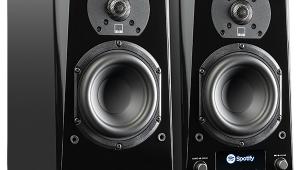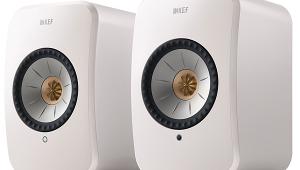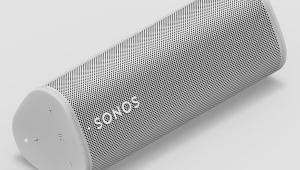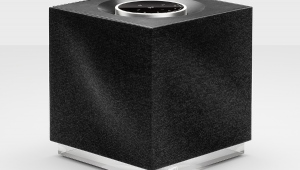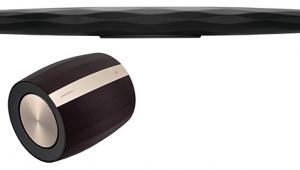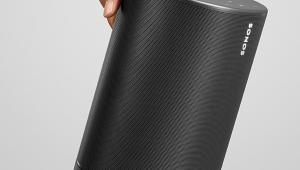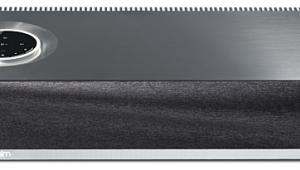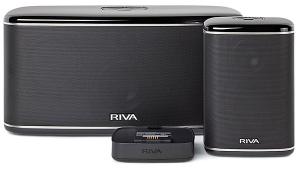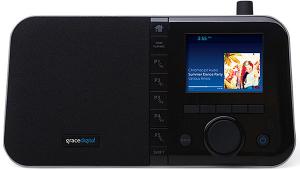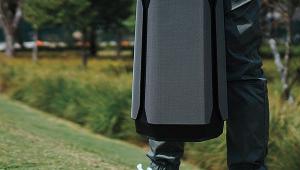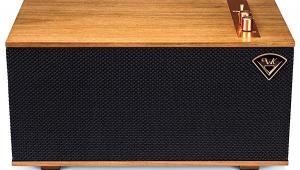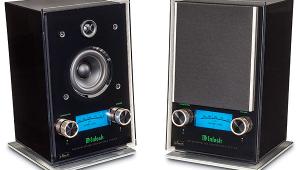Review: Dynaudio Xeo 5 wireless speakers
Wireless is, uh, in the air these days. Audio, video, telecom, and most everything else up to and including war-making are all proceeding nicely without any lengths of braided copper trailing behind. But too much of the time, this is more about wireless-ness than about what happens when the signal gets wherever “there” is. (Unless, that is, you have the misfortune to be riding in a car in the mountains of northern Pakistan…)
Not this time. And the rather unexpected reason is a new family of wireless speakers dubbed Xeo from Dynaudio, the Danish loudspeaker (and transducer) maker that is as widely respected in the hushed confines of pro audio as in the rough-and-tumble of high-end hi-fi.
Like all Dynaudio designs, Xeo is Serious Hi-Fi. The lineup so far consists of just two models, the two-way bookshelf Xeo 3 and the floor-standing, double-woofered Xeo 5, either or both of which combine with a Larousse de Poche-size transmitter and your sources — disc player, media streamer, iPhone/Pod/Pad, laptop, desktop, or just about anything else — to form a minimalist but honestly high-end system. The system uses a dedicated 2.4-GHz link to send digital audio, so there’s no Wi-Fi network needed, no software or drivers to install, no passwords to remember, and no potential clogging of IP traffic.
Dynaudio sent us not only a pair of Xeo 5s and a transmitter, but a Xeo 3 pair as well so we could test the range’s reach and multiroom/multisource abilities. (A single Xeo transmitter can route different signals to up to three pairs of speakers, in three different locations, over a range exceeding 50 feet.)
Setup
Before we even unbox the Xeos, let’s get one thing straight: Dynaudio’s RF solution is ultimately no more wireless than the next guy’s. Each Xeo, like every other “wireless” speaker, must be plugged into a wall outlet to power its onboard amplifiers, RF receivers, and other electronics. (Fortunately, plugging in an electrical appliance is still within the core competence of many American consumers.)
In the Xeo’s case, unboxing, essentially, is setting up: You plug the speakers in to the wall, set the small slide switches labeled “Left/Mono/Right” and “Room 1/2/3” on the rear panel, and you’re done. I like that. I also like beauty (I’ve heard that it’s truth, and vice versa), and our gloss-black Xeos brought it. Satin black and white finishes are also available.
Things at the transmitter end are only slightly more complex. The little box can be powered by any USB port, if your location happens to have one — I exploited the otherwise useless example on my Comcast DVR — though a wall wart is supplied. An analog minijack and RCA pair share Input 1 (auto-precedence chooses the RCAs over the mini), with optical digital and USB ports comprising Inputs 2 and 3. You just have to plug in a source or two — in my case, an RCA cable from my preamp’s fixed-level stereo record outputs and a USB cable for an iPhone .After the usual couple of weeks of everyday burn-in use, I turned my attention to close evaluation of the Xeo 5 towers. Unsurprisingly, I found them to sound very like the Dynaudio Excite line upon which they are based (though with a difference we’ll come to) and which I reviewed some years back.
- Log in or register to post comments
